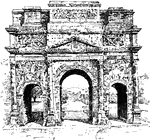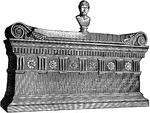
Sarcophagus of Lucius Cornelius Scipio Barbatus
An illustration of the sarcophagus of Lucius Cornelius Scipio Barbatus. Lucius Cornelius Scipio Barbatus…

A Section of Hadrian's Wall in Britain
A small portion of the great, Roman-built Hadrian's Wall in Britain, begun in AD 122. Two men, one sitting…
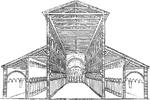
Old St. Peter's Basilica
"Section and Interior View of the five-aisled Basilica of S. Pietro at Rome, before its restoration.…

Choir of the Church of St. Sebald
A church of both Roman and Gothic architectural design. From the wall of the presbytery and extending…
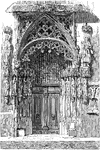
Bride's Door at Church of St. Sebald
St. Sebald is a church of both Roman and Gothic architectural design. On the northern side is the Bride's…

Temple of Theseus
The Temple of Hephaestus and Athena Ergane, also known as the Hephaisteion or Theseion, is the best…

Temple of Venus and Roma, Plan
The Temple of Venus and Roma (Latin: Templum Veneris et Romae) was the largest known temple in Ancient…
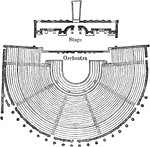
Ground Plan of the Theatre at Pompeii
"The theatre was essentially like the Grecian in its arrangement; it formed a semicircle with seats…
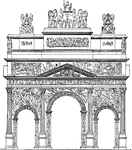
Triumphal Arch
The Roman Triumphal Arch in Orange, France. The image shows how it originally looked.
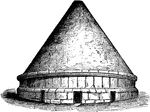
Tumuli
The most interesting monuments of Etruscan architecture which have been preserved are the tombs. They…


